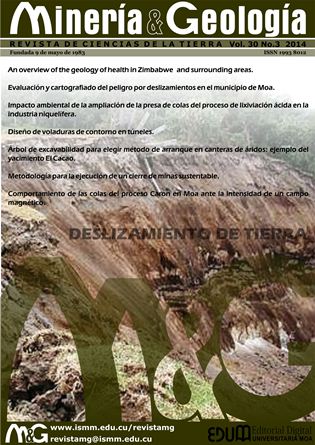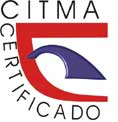Environmental impact caused by a tailings pond expansion in the nickel industry
Keywords:
tailings pond, impact assessment, nickel industry, Moa.Abstract
In Cuban nickel plants, the tailings are stored in ponds. The storage capacity of these tailings ponds requires to be constantly increased. The tailings pond capacity is to be increased upward by raising dykes due to space limitations to the pond´s length. The environmental impacts of this expansion have been identified and assessed by applying the Buroz´s Relevant Integrated Criteria, which combines several methods. This assessment allowed identifying the main actions causing the environmental impact, which are as follows: construction, tailings pond operations, pond decommissioning and post-decommissioning activities. The environmental components that are most affected are: the soil, the water, the air, the biota and the socio-economic factor. The most significant impacts were identified to be caused during the pond construction phase and operations. The elements that are most affected are: the soil, the air, the water, the biota and the economy. This work proposes actions to be carried out for the prevention, remediation and mitigation of the negative environmental impacts that have been identified in the environmental assessment.Downloads
References
ALONSO, E. & GENS, A. 2008. Aznalcóllar dam failure. Part 1: Fiel observations and material properties. Géotechnique 56(3): 165-183.
BUROZ, E. 1998. La gestión ambiental: Marco de referencia para las evaluaciones de impacto ambiental. Fundación Polar, Caracas, ISBN 980-6397-51-7, 376 p.
CICA (Centro de Inspección y Control Ambiental). 2001. Guía para la realización de las Solicitudes de Licencias Ambientales y los Estudios de Impacto Ambiental. La Habana, 56 p.
CONESA-FERNÁNDEZ, V. 2000. Guía metodológica para la evaluación de impacto ambiental. 3ra ed. Vol. 1. Editorial Mundi-Prensa, Madrid, 416 p.
GÓMEZ-OREA, D. 2003. Evaluación de Impacto Ambiental. 2da ed. Editorial Mundi-Prensa, Madrid, 760 p.
HERNÁNDEZ-COLUMBIÉ, T. & MARTÍNEZ-HERNÁNDEZ, G. 2010. Evaluación de impacto ambiental de las presas de colas de la industria del níquel. En: Simposio Internacional de restauración ecológica 2010. Memorias [CD-ROM], Santa Clara, Cuba, 8-13 septiembre.
LEOPOLD, L. B.; CLARKE, F. E.; HANSHAW, B. B. & BALSLEY, J. E. 1971. A procedure for evaluating environmental impact. U. S. Geological Survey Circular 645, Washington, D. C., 13 p.
RODRÍGUEZ-PACHECO, R. 2011. Los desafíos a que se enfrenta el cierre de minas en el siglo XXI. En: IV Convención Internacional Cubana Ciencias de la Tierra. Memorias [CD-ROM], La Habana, Cuba, 4-8 abril.
SÁNCHEZ-ESPINOSA, Y. 2010. La evaluación de impacto ambiental en los proyectos mineros. En: Simposio Internacional de restauración ecológica 2010. Memorias [CD-ROM], Santa Clara, Cuba, 8-13 septiembre.
ZANDARÍN & RODRÍGUEZ. 2008. Stability of a tailing dam considering the hidro-mechanical behavior of talings and climate factors. In: Toll, D. G.; Augarde, C. E.; Gallipoli, D. & Wheeler, S. J. (eds). Unsaturated soils. Advances in geoengineering. Taylor and Francis, London
Published
How to Cite
Issue
Section
- Authors retain copyright and guaranteeing the right magazine to be the first publication of the work as licensed under a Creative Commons Attribution-NonCommercial that allows others to share the work with an acknowledgment of the work's authorship and initial publication in this journal.
- Authors may establish separate supplemental agreements for the exclusive distribution version of the work published in the journal (eg, place it in an institutional repository or publish it in a book), with an acknowledgment of its initial publication in this journal.
- Authors are allowed and recommended to disseminate their work through the Internet (e.g., in institutional telematic archives or on their websites) before and during the submission process, which can produce interesting exchanges and increase citations of the published work. (See The effect of open access)










